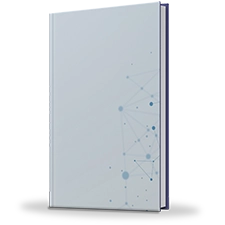Stem cell therapies work by promoting endogenous repair; that is, they aid damaged tissue in repairing itself by secreting "paracrine factors," including proteins and genetic materials. While stem cell therapies can be effective, they are also associated with some risks of both tumor growth and immune rejection. The synthetic cells operate much the same way a deactivated vaccine works," Their membranes allow them to bypass the immune response, bind to cardiac tissue, release the growth factors and generate repair, but they cannot amplify by themselves. The synthetic stem cells are much more durable than human stem cells, and can tolerate harsh freezing and thawing. They also don't have to be derived from the patient's own cells.
COVID-19 scenario analysis
Regardless of the outbreak of COVID-19 pandemic, government bodies all over the world are hugely investing on research & development activities to enhance the use of cancer stem cells in the cancer treatments.
Additionally, the development of stem cells for stem line banking and developing induced Pluri-Potent Stem Cell (PSC) lines is massively boosting the growth of the cancer stem cells market. Moreover, Umbilical cord mesenchymal stromal cells are also tested for the treatment of critically ill pneumonia patients. Therefore, the Synthetic Stem Cells Market is having positive impact of COVID-19 due to enhanced research and development activities.
Top impacting factors: market scenario analysis, trends, drivers and impact analysis
The synthetic stem cells market is driven by various factors such as ethical concerns regarding embryonic stem cells and the risk of tumor formation and immune rejection of natural stem cells. The increasing incidences of various cardiovascular diseases worldwide have led to rise in cardiac stem cells research. Furthermore, there has been a rise in stem cell targeted therapies in in cardiology, Diabetes, and neurology for research activities which has boosted the growth of synthetic stem cells market. However, the unclear and unstructured regulations on the use of synthetic stem cells can hinder the growth synthetic stem cells market.
Key benefits of the report
- This study presents the analytical depiction of the global synthetic stem cells market along with the current trends and future estimations to determine the imminent investment pockets.
- The report presents information related to key drivers, restraints, and opportunities along with detailed analysis of the Synthetic Stem Cells Market share.
- The current market is quantitatively analyzed to highlight the Synthetic Stem Cells Market growth scenario.
- Porter’s five forces analysis illustrates the potency of buyers & suppliers in the market.
- The report provides a detailed market analysis depending on competitive intensity and how the competition will take shape in coming years.
Questions answered in the synthetic stem cells market report
- Which are the leading players active in the synthetic stem cells market?
- What are the current trends that will influence the market in the next few years?
- What are the driving factors, restraints, and opportunities of the market?
- What are the projections for the future that would help in taking further strategic steps?
Synthetic Stem Cells Market Report Highlights
| Aspects | Details |
| By Application |
|
| By End User |
|
| By Region |
|
| Key Market Players | TheraCell Inc, VistaGen Therapeutics, Cesca Therapeutics, Pluristem Therapeutics, BrainstormCell Therapeutics, Gamida Cell, Athersys, Vericel, ThermoGenesis Corp, Cytori Therapeutics, Cellular Biomedicine Group, VeraTech Biologics,LLc, Caladrius Biosciences, Sangamo Therapeutics |
Loading Table Of Content...



